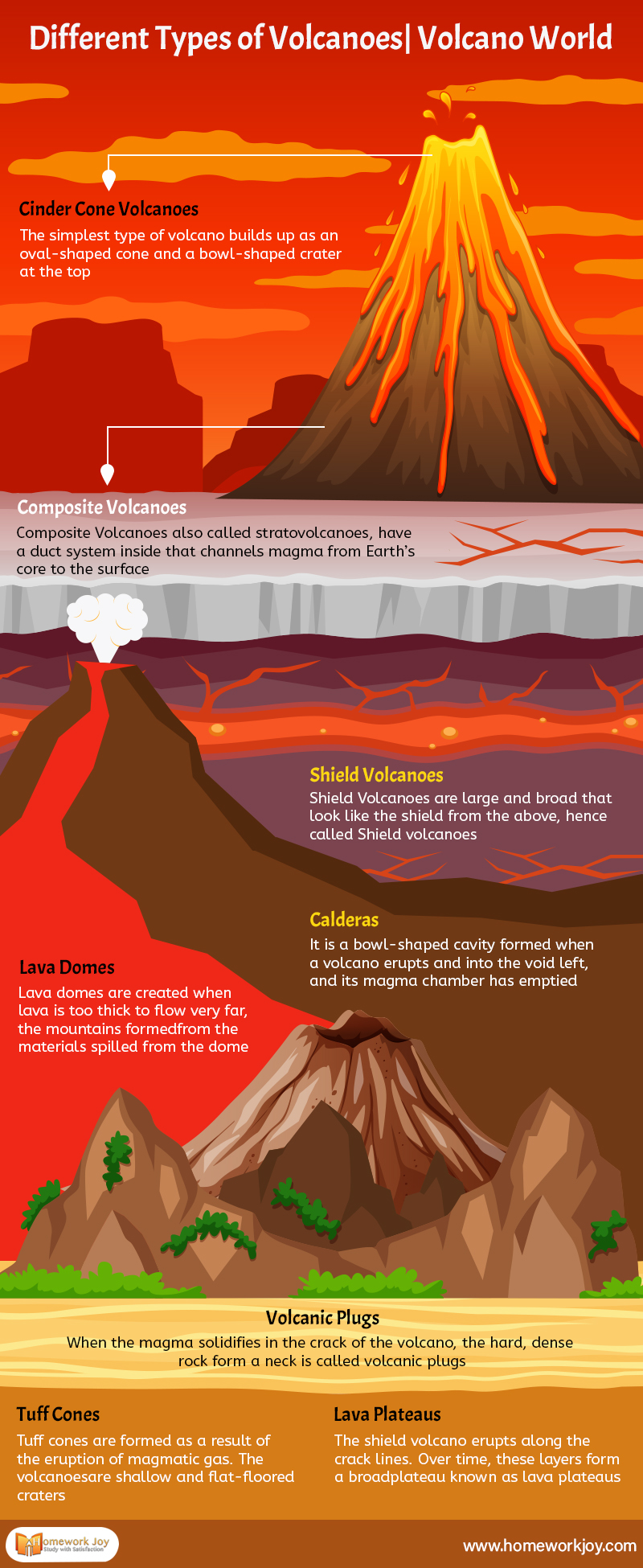A volcano is a fissure on earth’s crust through which lava, rocks, ashes, and gases erupt. These are mountains formed by the accumulation of eruptive products. For several years, they are existing and are responsible for the destruction, such as the Permian mass extinction for about 250 million years ago.
Researchers are still finding ways to predict when volcanic eruptions might occur on Earth and factors due to which volcanic eruptions happen. Due to this reason, they analyze clues such as gases, crystals, and other things linked with volcanoes.
1. Cinder Cone Volcanoes
The simplest type of volcano builds up as an oval-shaped cone and a bowl-shaped crater at the top. They are also known as secondary volcanoes as parasitic cones or shield volcanoes. They are relatively small and 91 meters tall.
2. Composite Volcanoes
Composite Volcanoes also called stratovolcanoes, as they from alternating layers of the lava flow. They have a duct system inside that channels magma from Earth’s core to the surface and are generally larger than cinder cones.
3. Shield Volcanoes
Shield Volcanoes are large and broad that look like the shield from the above, hence called Shield volcanoes. They are built of very thin lava spreading in all directions. Eruptions of these volcanoes are not explosive.
4. Lava Domes
Lava domes created when lava is too thick to flow very far. The mountains formed from the materials spilled from the dome. According to the U.S. Geological Survey, lava domes built when lava is too viscous to flow. An explosive eruption usually forms them.
5. Calderas
It is a bowl-shaped cavity formed when a volcano erupts and into the void left, and its magma chamber has emptied. According to San Diego University, there are three types of it – Crater Lake, Basaltic, and Resurgent.
6. Volcanic Plugs
When the magma solidifies in the crack of the volcano, the hard, dense rock form a neck is called volcanic plugs. According to the U.S. Geological Survey, this can result in significant landmarks such as Devil’s Tower in Wyoming and Ship Rock in Mexico.
7. Tuff Cones
Tuff cones formed as a result of the eruption of magmatic gas. The volcanoes are shallow and flat-floored craters. They generally range from 60 to 1,980 meters tall and 9 to 198 meters deep and filled with water to form lakes.
8. Lava Plateaus
The shield volcano erupts along the crack lines. Over time, these layers form a broad plateau known as lava plateaus such as Columbia Plateau, according to the Encyclopedia Britannica.
